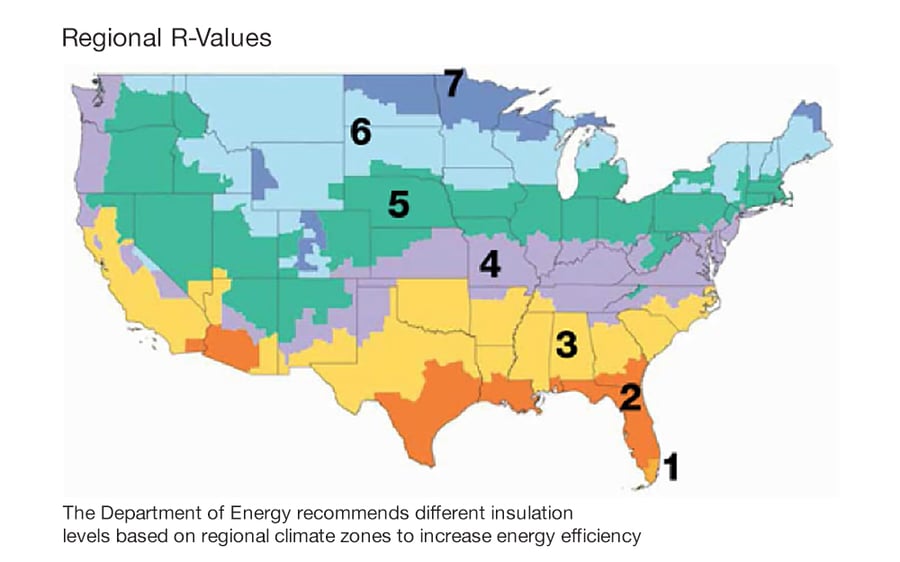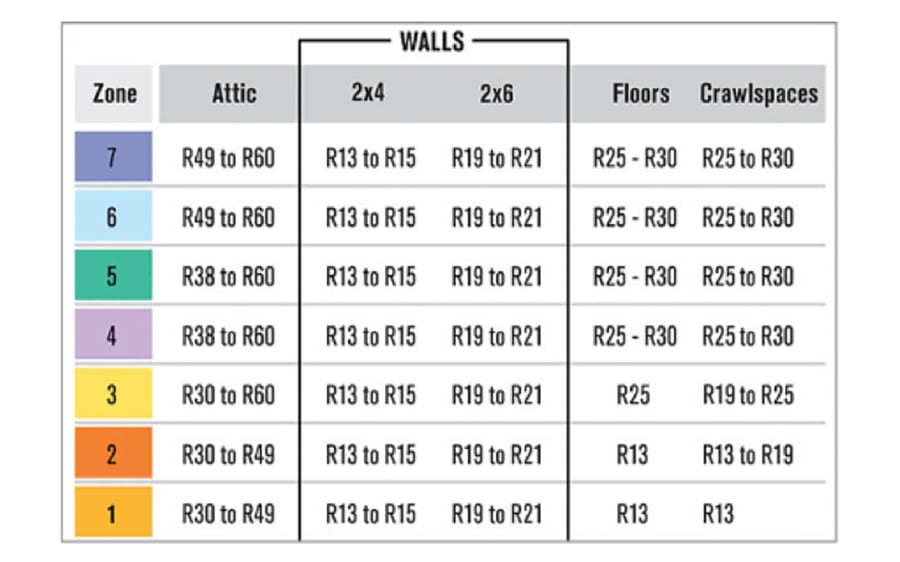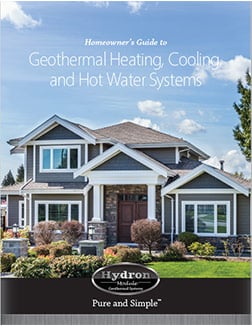What is a car with no tires? A cell phone with no screen? A lawnmower with no blade?
The answer?
Not very effective.
Just like many things in the home, insulation is never seen, always used, and invaluable when appropriately installed. Even with the best solar and geothermal system available, a poorly insulated home will never be able to reach its full potential. Whether you're building a new house or fixing up an existing home, these insulation basics can set your home up for years of comfort and efficiency!

The Basics of Home Insulation
A thoughtfully planned insulation strategy can vastly improve your home's livability, consistency of comfort, and, most importantly, energy efficiency. Each home will require a different layout, materials, and adherence to local building codes.
How Insulation Works
To understand the different types of insulation. We need to understand its importance and how heat works and moves. In our geothermal heat pumps, the technology is always moving warm to cold. If it's cold outside, the unit moves heat energy from the ground into your home. If it's hot outside, the unit is drawing heat energy away from your home and sending it into the comparatively cooler ground. This concept applies to your home's insulation in that heat will always want to move from warm to cool until it reaches equilibrium. Heat energy achieves this movement in 3 ways:
- Conduction - How heat moves through materials.
- Example: The ladle in a pot of soup transfers heat to your hand when touched - Convection - How heat circulates through liquids and gases
- Example: There are warmer zones and cooler zones in your grill, even with the lid closed - Radiation - Heat energy that travels by waves or particles
- Example: The rocks around a campfire giving off heat long after the fire dies down
Heat loss is an issue in the winter, as heat wants to move away from your home. Heat gain is an issue in the summer when heat wants to creep inside your home. That sneaky, sneaky heat!
Insulation's job is to stop that energy from leaving or entering the building, primarily by slowing conduction.
.jpeg?width=300&name=WICA_BisonTraffic%20(1).jpeg)
Without insulation in the winter, heat would move to unheated spaces like your garage, attic, and crawlspaces.
Your house is an energy highway. Insulation is a herd of apathetic bison crossing the road.
Space between solids helps to limit conduction while reflective materials restrict the flow of radiant heat.
Types of Insulation
Insulation requirements and materials change based on the different types of heat energy flow and the location of the house. The insulation in your attic is different than what is in your walls because there are different paths that the heat can flow through.
The insulation can be broken down into two sections: Method and Materials. Method dictates the shape in which insulation is packaged and installed, and the material is from what insulation is made.
Spray Foam Insulation
Ideal for small cracks, gaps, and seams, spray foam insulation is very adept at finishing up those little details in a project. It's ideal for sealing around doors, windows, and vents and can be found quite commonly in small cans with a detachable plastic nozzle. Of course, there is larger equipment designed to handle more demanding spray foam jobs. It is typically a latex or polyurethane base and relies on rapid expansion in volume to seal up hard-to-reach cavities while a low-conductivity gas acts as the barrier to heat flow.
Common Material Varieties: Latex, Polyurethane, Polyisocyanurate
Loose-Fill Insulation
Loose-fill insulation can be blown or sprayed into a space using specialized pneumatic equipment. It's typical to see loose-fill insulation used over existing installations, where a small hole is ported into the exterior of the cavity, and the material is blown in. If applied in proper densities, loose-fill will not settle in the building cavity and can remain effective for 30 years or more! You can often find loose-fill insulation in attic spaces.
Common Material Varieties: Cellulose, Fiberglass, Mineral Wool, Polystyrene, Vermiculite
Insulation Blankets
Blankets, or "batts and rolls," are rolled up segments of insulation material that are cut to length. They are often available in pre-cut widths to minimize the amount of measurement work that needs doing. Their versatility goes even a step further, as they are available with or without paper and foil facing. The paper adds structure to the insulation, and the foil adds extra protection against radiant heat flow.
Common Material Varieties: Fiberglass, Mineral Wool, Cotton, Sheep's Wool
Foam Board Insulation
As the name suggests, this method is a rigid panel of foam insulation that can be affixed and applied to just about any part of your home. Just like all methods, the thermal resistance (or R-value) of the foam board varies based on the board's material density. If your home has a slab-on-grade foundation, where the structure sits directly on the ground without a basement, your local building codes may require that slab to have sufficient insulation. Foam board is the perfect candidate for this application.
Common Material Varieties: Fiberglass, Polystyrene, Polyisocyanurate, Polyurethane, Phenol-formaldehyde (less popular in new construction)
Understanding R-Values
As stated above, the R-value measures your insulation's thermal resistance. As a general rule, increased insulation thickness will proportionally increase the R-value, but many other factors can contribute to increasing or decreasing that number. Contributing factors can include insulation material, thickness, density, moisture accumulation, and age of the insulation.
In the United States, R-values are categorized by zones. They are numbered 1-8, with 1 being the southernmost states, and 8 being the northern boroughs in Alaska. In each zone, a different range of R-values is acceptable in varying parts of the home.

source: www.homedepot.com

source: www.homedepot.com
The Key To Energy Efficiency
If you're looking to build or renovate sustainably and install renewable technologies like PV solar and geothermal, then proper insulation is your first step. Taking the size of your home, local building codes, climate, and the heat energy flow into account when working on your insulation strategy is critical! Contact a professional to consult you on proper installation. In the meantime, if you want to take your home's sustainability to the next level, check out our guide on how solar and geothermal can help!


